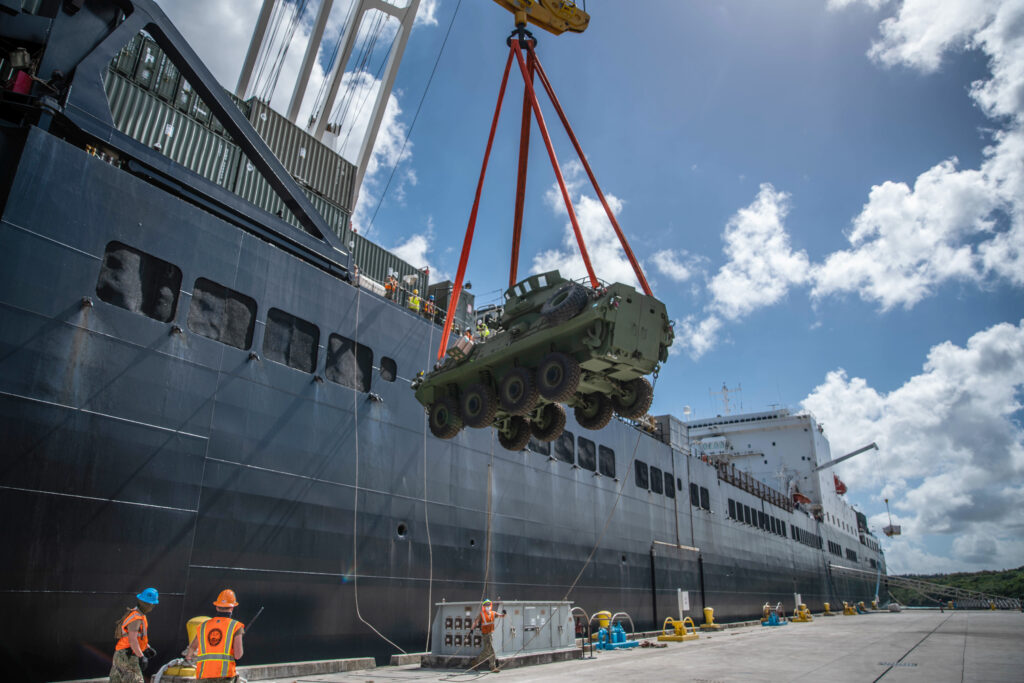
ARLINGTON, Va. — The Marine Corps’ commandant sees a continued need for the Maritime Prepositioning Force in the future as his Force Design 2030 initiative is implemented.
The MPF, managed by the Military Sealift Command, is comprised of two squadrons of ships in full operating status. The squadrons are located at Guam and Diego Garcia. The squadrons carry enough carry enough equipment and supplies to sustain more than 16,000 Marine Expeditionary Brigade and Navy personnel for up to 30 days. The ships can offload equipment at established port facilities or while anchored, using onboard watercraft operated by naval support element forces. The MPS ships complement naval amphibious forces.
Gen. David H. Berger, speaking to reporters May 5 about his update to Force Design 2030, said that “in conjunction with Army prepositioning and the other services’ prepositioning, we’re going to have to take a holistic look at prepositioning in the future. The current framework, like our current posture around the world, is not set optimally for what the National Defense Strategy requires us to do. So, as we adjust global force posture of the joint force — including the Marines — we’re also going to need to adjust maritime prepositioning.
“I won’t speak for the Army, but I would think for the joint force, those adjustments have to be made in conjunction with each other,” Berger said. “There is no possible way you’re going to be able to generate all of the airlift that you need to lift all that we’re going to need anywhere in the globe. Prepositioning cuts the time frame to respond dramatically. We’re going to have to look at MPF and find out how it matches the adjustments we’re going to make with global force posture.”






